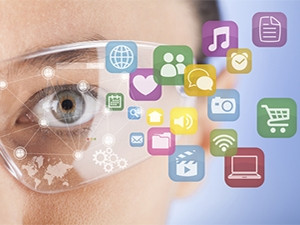
Unicef, semiconductor IP company ARM, and product strategy and design firm frog have launched the Wearables for Good Challenge, calling on innovators across the globe to look at the potential of designing wearable technologies for social good.
Through the multi-year partnership, the organisations aim to accelerate the development of new technologies to overcome the barriers that prevent millions of families from accessing basic health, education and support services.
The challenge seeks to discover if wearable and sensor technology could be the next mobile revolution. Running over six months, the challenge invites developers, designers, community partners and problem-solvers to design a wearable device that offers a cost-effective, efficient, and sustainable solution to pressing maternal, newborn or child health problems.
ARM will work alongside Unicef's network of innovation labs and country offices to identify and scale up pilot projects that demonstrate the potential to be used at a national level. Over the next year, the organisations will uncover the most impactful solutions being used or in trials across the Unicef network and invest to deliver them wherever they are needed.
In the long term, the partnership will conduct research to evaluate and promote market opportunities in developing countries. With the findings, they will outline the business case for investing in solutions for mobile financial services, identity, transportation, learning and wearable/sensor technology.
The goal is to build momentum for globally co-created and scalable technologies that attract commercial investment.
According to the organisations, the Wearables for Good design challenge is rapidly turning into one of the most inclusive global technology races ever, attracting more than 600 registrations so far from Africa, Asia-Pacific, Europe and North and South America, all vying for two winning places.
"It is not too late to enter - we are looking for concepts that address these global issues, not final designs," says Erica Kochi, co-leader and co-founder of Unicef Innovation. "We set up the challenge this way to make participation widely available to anyone with a good idea. The challenge itself is unique among open-tech challenges both in its global reach and with the focus on creating products to save lives, help educate young people or advance their communities in some way."
Simon Segars, CEO of ARM, says the wearables design challenge was set to encourage a diverse group of people to create ideas for new technologies that solve a social problem.
"The broad spread of people registering tells us we are succeeding. This is hugely encouraging as conceiving technologies that tackle issues such as child health and education, especially in the emerging world, demands the attention of people with an array of life and professional experience," Segars adds.
"We are excited to see submissions - and expressions of interest - coming from the geographies where these solutions will bring the most value and deliver the highest impact," says Fabio Sergio, vice-president of Creative, frog.
"This challenge offers an opportunity for local innovators to submit ideas and concepts that draw on their inherent sensitivity to the needs and aspirations of the people they are trying to help."
Entrants will be guided by the 'Use Case Handbook' created by Unicef and frog. The handbook outlines the challenges that need to be addressed, as well as considerations, context and principles for good design.
Two winners will be selected at the end of the design challenge. Each winner will receive $15 000 funding alongside incubation and mentorship support from ARM and frog.
Click here for more information.
Share